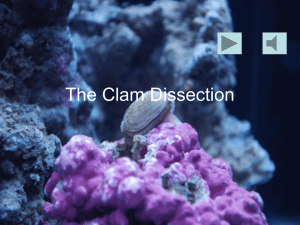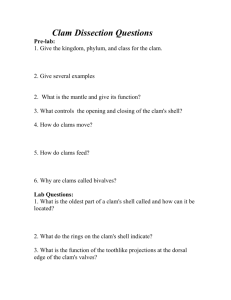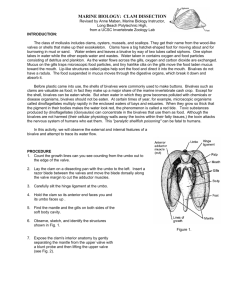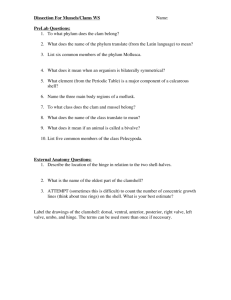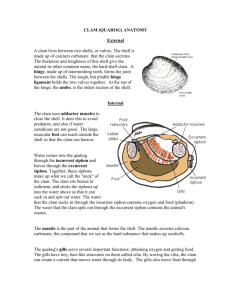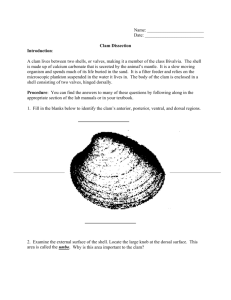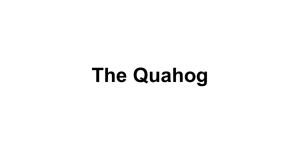Clam Dissection Background KEY - Mr. Lesiuk
advertisement
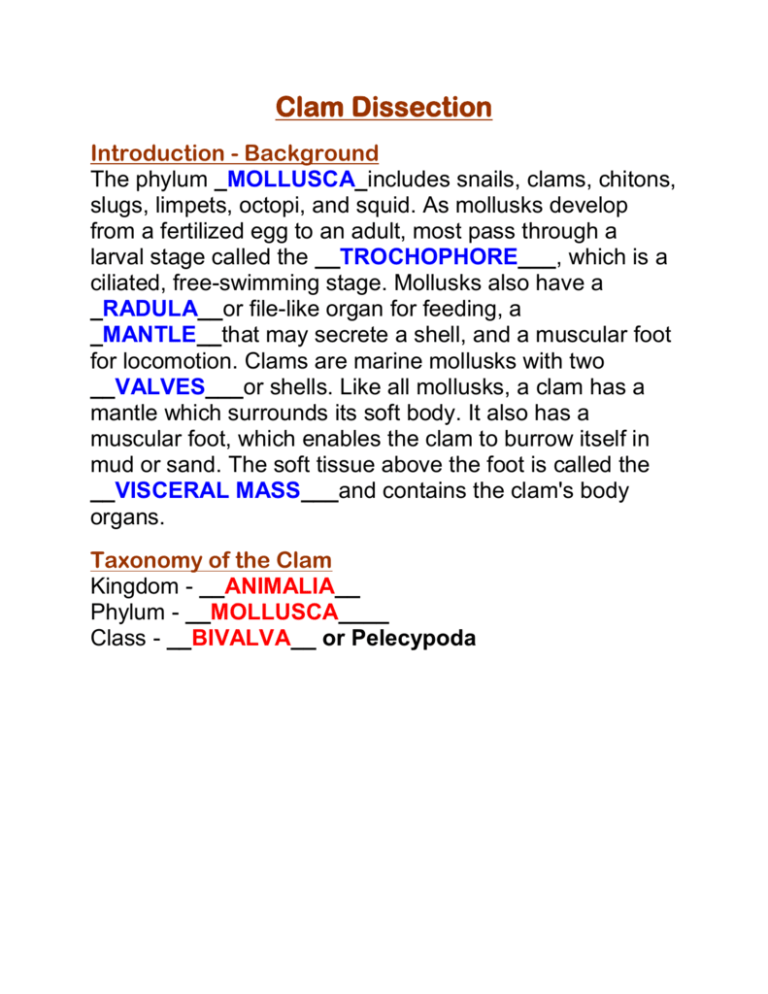
Clam Dissection Introduction - Background The phylum _MOLLUSCA_includes snails, clams, chitons, slugs, limpets, octopi, and squid. As mollusks develop from a fertilized egg to an adult, most pass through a larval stage called the __TROCHOPHORE___, which is a ciliated, free-swimming stage. Mollusks also have a _RADULA__or file-like organ for feeding, a _MANTLE__that may secrete a shell, and a muscular foot for locomotion. Clams are marine mollusks with two __VALVES___or shells. Like all mollusks, a clam has a mantle which surrounds its soft body. It also has a muscular foot, which enables the clam to burrow itself in mud or sand. The soft tissue above the foot is called the __VISCERAL MASS___and contains the clam's body organs. Taxonomy of the Clam Kingdom - __ANIMALIA__ Phylum - __MOLLUSCA____ Class - __BIVALVA__ or Pelecypoda Lab Questions: 1.a) Give the kingdom, phylum and class for the clam. KINGDOM = ANIMALIA PHYLUM = MOLLUSCA CLASS = BIVALVA / Pelecypoda b)What is the oldest part of a clam's shell called and how can it be located? It is the Umbo, and it is the coiled up hump like structure with the tight rings. c). Why are clams called bivalves? BI = Two VALVE = Shell 2. What do the rings on the clam's shell indicate? They indicate how old the clam is; the more rings the older the clam. 3. What is the function of the tooth-like projections at the dorsal edge of the clam's valves? These microscopic teeth help make sure that the valves align properly while closing. To make sure that the shells form a tight seal of protection. 4. What is the mantle cavity? The large space found between the two lobes of mantle. Water flows through this space and the food and visceral mass are located in this cavity. 5. Where are the incurrent and excurrent siphons located and what is their function. Excurrent siphon is a hole between the two lobes meet at the posterior end of the clam. It is found more dorsal than the incurrent siphon. The excurrent gets rid of waste water and wastes, while the incurrent brings in fresh water, food and gases. 6. How do clams breathe? Clams use two pairs of feathery gills for respiration (gas exchange), as oxygen diffuses into the gills. 7. Describe the shape of the clam's foot. It is wedge/axe shaped to help it dig. 8. Where are the palps found and what is their function? A pair of labial palps are located at the anterior end of each set of gills. They direct the trapped food toward the mouth. 9. Describe the movement of food from the incurrent siphon through the digestive system of the clam. Plankton Incurrent siphon Mucous on gills cilia toward labial palps Labial palps Mouth Stomach Intestine Anus Excurrent Siphon. 10. Why are clams referred to as "filter feeders"? They filter plankton out of the water and trap it and direct it to their digestive tracts. 11. Label the internal structures of the clam (use your diagrams from Unit 6 Notes #1) HEART UMBO Intestine STOMACH Posterior Adductor Muscle MOUTH ANUS Anterior Adductor Muscle Excurrent Siphon Labial Palp Incurrent Siphon Intestine GILLS FOOT MANTLE GONAD SHELL / Valve
